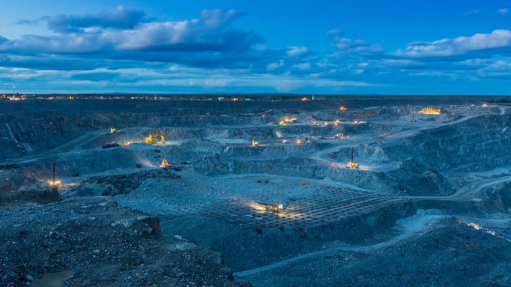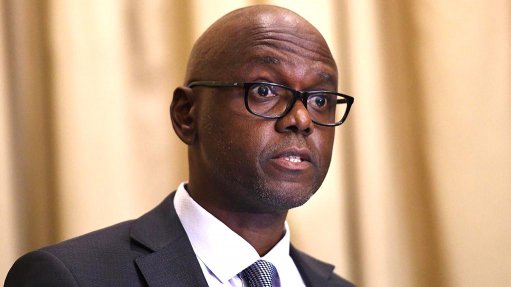Minerals Council South Africa setting out to boost local demand for green hydrogen



From left, Dr Rebecca Maserumule, Sietse van der Woude, Zanele Mavusa Mbatha.
From left, Mahandra Rooplall, Dr Rebecca Maserumule, Sietse van der Woude, Zanele Mavusa Mbatha, and Bernard Swanepoel.
Photo by Creamer Media
JOHANNESBURG (miningweekly.com) – Minerals Council South Africa is focused on increasing the domestic demand for green hydrogen, which it sees as contributing to the kickstarting of the hydrogen economy in South Africa.
“The applications that we’re looking at are stationary as well as mobility applications of using hydrogen within the mining industry,” Minerals Council modernisation and safety senior executive Sietse van der Woude outlined during last week’s Hydrogen Economy Discussion covered by Mining Weekly.
“The stationary applications may not make economic sense today but if you look at the future trends in terms of reliability and electricity price trends, then stationary applications can very well be a feasible option in the future,” Van der Woude pointed out during a panel discussion facilitated by Industrial Development Corporation of South Africa (IDC) industry development planner Mahandra Rooplall, and in which Science and Innovation Department chief science and technology representative Dr Rebecca Maserumule as well as Bambili Energy CEO Zanele Mavuso Mbatha participated.
Rooplall reported that the IDC had been driving the development of the hydrogen industry for several years in facilitating the discussion on regional and global developments, technology, original equipment manufacturer (OEM) advances and implications for the mining industry.
Van der Woude pointed out that when it came to mobility application, heavy mine trucks could not be powered enough by electric means.
“So, we need to look at alternative ways and the hydrogen fuel cell vehicles are an opportunity in that regard,” he added.
In spelling out the hydrogen opportunity, Maserumule identified the six African countries that had hydrogen strategies as Algeria, Kenya, Mauritania, Morocco, Namibia and South Africa amid more than 50 countries worldwide having hydrogen strategies.
The projected global numbers for hydrogen production show seven-million tons of green hydrogen or its derivative being produced a year by 2030, 32-million tons by 2040 and 72-million tons by 2050.
Maserumule drew attention to this being based on expected exports into Europe and Asia, which did not have sufficient renewables or which did not have the comparative advantage.
Africa securing 15% of that market would amount to one-million tons of green hydrogen by 2030, seven-million tons by 2040 and just under 19-million tons by 2050, a part of which would be domestic consumption.
“What’s most exciting is that those numbers point to a cumulative investment by 2050 of $400-billion on the African continent for hydrogen production,” Maserumule highlighted.
This does not include OEMs and other portions of the supply chain.
The export value for the African continent would be a $15-billion-a-year increase in African export value in 2050.
“The most exciting socioeconomic benefit is the 30-million job years that will be created by 2050 on the African continent if the continent is able to capture 15% of the global hydrogen economy.
In identifying the barriers to that, Maserumule spoke of Africa having a globally top comparative advantage for renewable energy production, with only China, Australia and Chile beating most of the African countries.
But unlike grey hydrogen, which South Africa produces in large quantities, one of the challenges of green hydrogen production is the intensive capital expenditure (capex) that is required.
While the cost of coal or natural gas has a considerable impact on grey hydrogen, the capex required for renewables and electrolysers has a major impact when it comes to the cost of green hydrogen.
There is a considerable gap between the cost of investment in developed countries compared with the cost of development in undeveloped countries.
South Africa’s average internal rate of return, or IRR, is well positioned at between 11% and 14%.
Being chased is the levelised cost of hydrogen, with grey hydrogen at $2/kg and green hydrogen at $5/kg to $8/kg.
The reason why green hydrogen project developers are wanting to come to South Africa or Africa in general is because South Africa’s, compared with renewable costs, is competitive.
However, if investment costs in South Africa are higher than those of developed countries, South Africa’s levelised cost of hydrogen is much higher.
Some analysis finds that a 6% increase in the weighted average cost of capital, or WAC, could add 50%.
“I would say South Africa’s doing a really great job of managing our country risk premium and project risk premium,” said Maserumule.
On average, South Africa’s country risk premium is between 2% and 7% and the project execution risk is between 2% and 5%.
The putting in place of a green hydrogen unit in South Africa is expected to play a key role in reducing the project execution risk.
The work the IDC is doing on the Just Energy Transition Investment Plan and in putting in place a green hydrogen unit to assist with challenges, is going to play a key role in reducing the project execution risk.
Also, the work the IDC is doing around the Green Hydrogen Commercialisation Strategy is focused on bringing candidate projects to final investment decision, or FID, status.
“Where we do have levers, we are using those very effectively,” she said, with steps being taken to get structures in place to improve the investment environment for capex to secure better rates.
If South Africa succeeds in doing that, then this country’s levelised cost of hydrogen will hopefully be in line with what is happening in Asia or other countries that are developing.
But there is a need for much faster action.
Van der Woude’s outline prompted facilitor Rooplall to point out the double-whammy effect of platinum group metals (PGM) being needed for the generation of green hydrogen by electrolysers and the IDC commercialisation strategy targeting local manufacture of the equipment needed for the generation of green hydrogen.
“The double-whammy effect comes in the fact that those electrolysers are used for green hydrogen production, allowing us to also influence the price locally, so that’s a very important component, which also touches on what Bambili Energy is doing in this space,” he added.
BAMBILI ENERGY
Bambili Energy CEO Zanele Mavuso Mbatha said her company was focused on ensuring that it co-built a hydrogen stream around the manufacturing of electrode membrane assemblies required for hydrogen-using fuel cell systems and the fuel cells themselves.
This is important because a fuel cell system generates power that can be used for mobility, especially heavy-duty transport, as well as for stationary power around minigrids, which facilitate the decentralisation of electricity generation.
Bambili is one of the companies in South Africa that is setting up the manufacturing around fuel cell systems and their subcomponents.
Linked to that is ensuring that there is the local demand.
“We have a couple of projects we’re working on because we think that early adopters are critical, especially in the PGM space because the most expensive component in fuel cell systems is platinum.
“There can be a very positive relationship between the use of fuel cell systems both for transportation and for stationary power and helping to create a new industrial base for PGMs through the manufacture of electrolysers and fuel cell systems,” Mbatha highlighted.
MINERALS COUNCIL FOCUS
One-third of PGM output is used by the automotive sector to clean up the exhaust gases from internal combustion engines and as the world transitions towards the adoption of battery electric vehicles (BEVs), a large gap in PGM demand is expected to open up.
This is why the South African mining industry sees the kickstarting of the hydrogen economy as a very important contributor to plugging the gap that is expected to develop for PGMs as BEVs emerge.
Currently, 180 000 people are employed in the platinum industry and each one of them has at least seven to ten dependants.
Against that background, the expected loss of PGM demand to BEVs spells dire consequences for the South African mining industry.
Comments
Press Office
Announcements
What's On
Subscribe to improve your user experience...
Option 1 (equivalent of R125 a month):
Receive a weekly copy of Creamer Media's Engineering News & Mining Weekly magazine
(print copy for those in South Africa and e-magazine for those outside of South Africa)
Receive daily email newsletters
Access to full search results
Access archive of magazine back copies
Access to Projects in Progress
Access to ONE Research Report of your choice in PDF format
Option 2 (equivalent of R375 a month):
All benefits from Option 1
PLUS
Access to Creamer Media's Research Channel Africa for ALL Research Reports, in PDF format, on various industrial and mining sectors
including Electricity; Water; Energy Transition; Hydrogen; Roads, Rail and Ports; Coal; Gold; Platinum; Battery Metals; etc.
Already a subscriber?
Forgotten your password?
Receive weekly copy of Creamer Media's Engineering News & Mining Weekly magazine (print copy for those in South Africa and e-magazine for those outside of South Africa)
➕
Recieve daily email newsletters
➕
Access to full search results
➕
Access archive of magazine back copies
➕
Access to Projects in Progress
➕
Access to ONE Research Report of your choice in PDF format
RESEARCH CHANNEL AFRICA
R4500 (equivalent of R375 a month)
SUBSCRIBEAll benefits from Option 1
➕
Access to Creamer Media's Research Channel Africa for ALL Research Reports on various industrial and mining sectors, in PDF format, including on:
Electricity
➕
Water
➕
Energy Transition
➕
Hydrogen
➕
Roads, Rail and Ports
➕
Coal
➕
Gold
➕
Platinum
➕
Battery Metals
➕
etc.
Receive all benefits from Option 1 or Option 2 delivered to numerous people at your company
➕
Multiple User names and Passwords for simultaneous log-ins
➕
Intranet integration access to all in your organisation



















